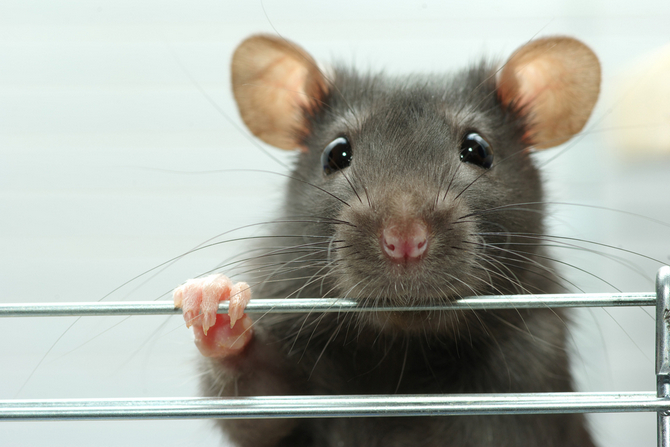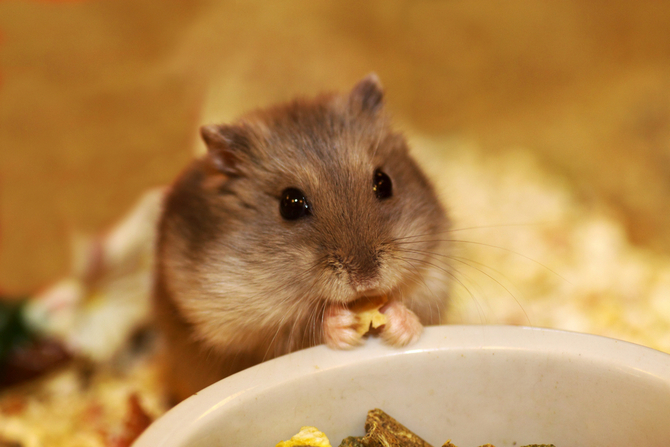You’re thinking about adding a new furry member to your family, but which creature is better - a hamster or a rat?
This article will provide you with all the information about pet rats and hamsters that you need to know so you can make the best choice of animal for you and your family.
Both hamsters and rats make wonderful non-traditional pets. They are cute, fuzzy and fun to interact with. Rats and hamsters are both fairly simple to take care of and are a great choice for people living in small spaces where a larger animal like a cat or a dog wouldn’t be suitable. As a first-time pet owner, adult or child, they would be great companions and also would teach the responsibility that comes with caring for another life. Rats and hamsters thrive in clean environments with plenty of appropriate food and fresh water available at all times.
Rats as Pets

Rat life expectancy
Adult rats weigh between one half to one pound and have a relatively short life-span of two to three years. Rats are very social and inquisitive animals by nature, so it is recommended that you keep them in pairs of the same sex for companionship or if choosing opposite sex rats, one or both should be neutered or spayed so you don’t have surprise litters of 12 or more rat pups!
Caring for your rat
Rats will make themselves at home in any roomy cage with adequate ventilation. You can use aspen bedding which is typically marketed for snakes or any other type of pelleted substrate as long as it’s not pine or cedar since it is poisonous to the little critters. They need to have places to hide and sleep, different things to crawl on, run through and to generally cause mischief with. Their cages need to be cleaned out daily to remove waste and keep everything smelling fresh and the rats healthy. Rats can eat any store-bought rodent food and love to have human food treats, as long as they are healthy like fruits and vegetables. Junk food for you is junk food for a rat and would be a poor choice for their longevity and quality of life.
Enjoying your new pet
Rats are an exceptional pet for younger children that want an animal that they can remove from their cage and play with on a regular basis. They enjoy being handled and playing with people once they feel comfortable in their new environment. Although, any play needs to be supervised with very young children since a rat can bite if hurt or scared. Rats are very investigative and as a result, they need to be stimulated mentally and physically continually to keep them content. Rats are very intelligent animals, and it is possible to train them to do tricks, with the help of lots of treats of course. They also are very affectionate and will show their owner the love they have for them with snuggles and kisses. They are definitely not a hands-off pet. They need interaction with other rats, people and also lots of different obstacles to explore and play within their cages. The reward for choosing a rat is a fairly easy to take care of pet that will bring joy and unconditional love to you and your family.
Hamsters as Pets

Hamster life expectancy
Hamsters range from two to six inches long depending on the breed and live for one and one-half to two years, possibly longer depending on breed. There are many different types of hamsters all with slightly different qualities. Generally speaking, hamsters are nocturnal creatures. This needs to be taken into consideration when choosing this type of pet. Having an animal that sleeps all day and spins around in the wheel in his cage all night making noise might not be an ideal situation, especially for children.
Different breeds have different needs
Some hamsters need to be kept alone and will only fight with a cage mate. Other types enjoy the company of another hamster, as long as they are the same sex or there will be lots of babies - hamsters are prolific breeders! It is recommended that before choosing a hamster to make sure of the nuances your particular breed has by consulting the breeder, pet store, etc.
Taking care of your new hamster
As far as habitat and food are concerned, hamsters and rats are very similar. A clean cage, rodent pellets and fresh water available consistently are the necessities. Just as rats, bedding should be aspen shavings, pellet substrate or the like; pine and cedar are poisonous to hamsters. They also love fresh fruit and vegetable treats and enjoy the dried versions as well.
Who is a hamster best for?
Hamsters are nocturnal creatures and they need to be left undisturbed during the day. If they are kept awake and handled, they are likely to get cranky and could bite. They also tend to have awful eyesight and may mistake a human finger for a tasty treat. For those reasons, a hamster may not be a good selection for a young child who would not understand why their little pet only wants to sleep all day and not play with them and occasionally tries to eat their hand. On the contrary, the fact that hamsters are nocturnal may be of benefit to some. If you are gone all day at work, your little friend will not be pining away for you - he’ll just be sleeping. When you get home in the evening, he’ll be ready to interact and spend some quality time together. Hamsters are an ideal pet for someone who wants to bring a low-maintenance animal into their home. They are extremely cute and fun to watch stuff their little expandable cheeks with an inordinately large amount of food. They are more hands-off than rats and typically will not be able to be trained. Although just like any animal, they appreciate being treated well and will show you love and affection in return, thus a hamster might be the perfect addition to your family.
Make the best choice for you
As you can see, both rats and hamsters have extremely positive qualities and some drawbacks for the prospective owner. It boils down to a matter of preference and what animal would be the best fit for your personal situation. Armed with the knowledge of the particulars of each creature, you will now be able to make an informed decision and hopefully enjoy your new pet for years to come.